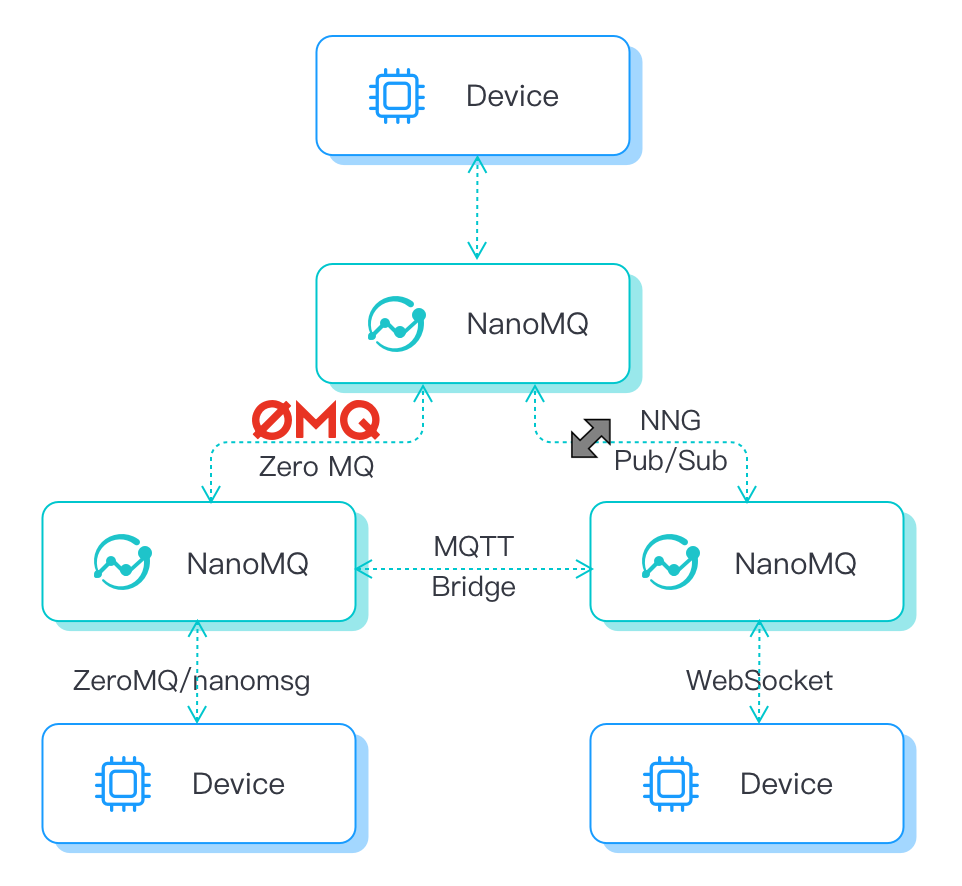Introduction
NanoMQ is an open-source edge computing project released in Jan 2021 and it is the next generation of lightweight, high-performance MQTT messaging broker for the IoT edge computing scenario.
Github repository address: https://github.com/emqx/nanomq
NanoMQ in collaboration with NNG. Relying on NNG's excellent network API design, NanoMQ can focus on MQTT broker performance and more extended features. The goal is to provide better SMP support and a high performance-price ratio in edge devices and MECs. There are plans to add other IoT protocols such as ZMQ, NanoMSG, and SP in the future.

Key Features
Fully MQTT 5.0 Compliant: Fully support MQTT 5.0/3.1.1, Compatible with all standard open-source MQTT SDKs.
MQTT Bridges supported: Bridging message from edge to multiple clouds. In-line connections to Global cloud services.
Rule Engine: Unlock the flexibility of data with a SQL-based rule engine. Integrates with eKuiper to bring stream processing to the edge.
Message Persistence: Preserve your business-critical data with built-in data persistence, and resume uploading automatically when the connection is restored.
Integrability: Reduce the cost of integrating edge computing applications with event-driven WebHooks. Easy to maintain with EdgeOps friendly HTTP APIs.
Multi-Language Protocol: Support multiple protocols such as ZeroMQ/nanomsg/NNG/WebSocket. Enabling flexible and diverse routing topology on edge with. Secure your IoT connections with TLS/SSL. MQTT STREAM: MQTT messages for the same topic can be viewed as a data stream, and this data stream can be stored and queried. For some poor network environment, it provides a solution for the integrity and reliability of data.
Why NanoMQ
Ultra-lightweight: The booting footprint is less than 200Kb in the minimum feature set.
Asynchronous I/O: Parallelize computation for IoT & MQTT with a built-in actor model.
Multi-threading: Scale out easily to engage multiple cores with less CPU usage in the modern SMP system.
Blazing Fast: Achieve million-level TPS. Up to 10 times faster than Mosquitto on a multi-core CPU.
Cross-platform: Highly compatible and portable with any POSIX-based platform.
Interoperability: Transparent and customizable data flow. EdgeOps friendly.